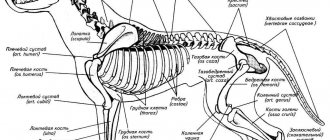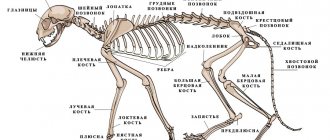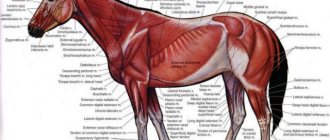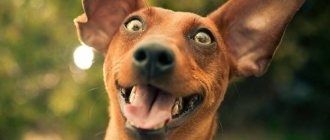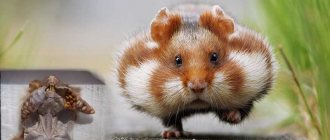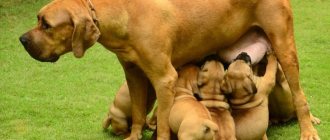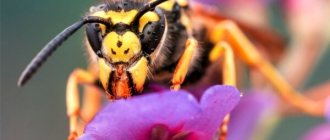The anatomy and physiology of dogs are actively studied, since these four-legged pets are the most popular pets. The collected data helps develop rules of care and maintenance, as well as create new methods of treatment for various diseases.
Awareness of the characteristics of a dog’s body is necessary when providing first aid and taking an anamnesis at an appointment with a veterinarian. Studying the anatomical structure of the body is not only useful, but also very interesting. Some facts are so amazing that they have earned an honorable place in the Guinness Book of Records.
Skeletal structure of a dog
First, it’s worth understanding what a dog’s skeleton is made of. This important part of the body acts as a frame and protects the internal organs from external influences.
Variety of skull types
The skull serves as a helmet for the brain, so its bones are the strongest. But they harden only over time - in puppies, all cartilage and ligaments are very elastic, and fragile bones are easily injured.
Most of the skull is motionless. The dog is able to control the movement of only 2 bones: the hyoid and lower jaw.
Depending on the appearance, the skull is divided into 3 types:
- dolichocephalic, characterized by an elongated and elongated shape;
- mesocephalic, characterized by moderate length and wide shape;
- brachycephalic, which implies the presence of a wide head with a short muzzle.
About 75% of breeds belong to the second type. The third type is considered the most problematic, since the specific structure of the skull impairs respiratory function. Brachycephalic dogs include pugs, bulldogs and other flat-faced pets. Due to their short nasal passages, they often drool and snore in their sleep.
How are teeth and jaw structured?
Depending on the breed, the puppy first grows 28 or 32 baby teeth. Closer to 1 year, they are replaced by 42 permanent ones. By this age, the animal has formed a bite. It comes in 4 types:
- scissor-shaped, corresponding to the anatomical norm (when the jaws are closed, the lower incisors are neatly covered by the upper ones);
- pincer-shaped, which involves closing the jaws strictly in one line;
- an overshot that exposes the teeth on the lower jaw due to its strong protrusion forward;
- undershot is a type of undershot, the opposite of undershot, characterized by increased grinding and brittleness of teeth.
Thanks to the mobility of the jaw bones and the strength of the molars, the dog can easily chew raw meat and bones. The force of compression of dog jaws was taken into account when breeding fighting breeds. The animals with the most powerful grip always emerged victorious from the arena, as they easily held their prey in their grip for 3 hours.
Spine and everything around it
When studying the anatomy of a dog, it is important to note that its skeleton consists of 289-292 bones. The exact amount depends on the length of the tail, but it is always greater than in humans. There are only 206 bones in our body.
The canine spine consists of:
- 7 cervical vertebrae;
- 12-13 vertebrae in the thoracic region;
- 7 oval vertebrae in the lumbar region;
- 3-4 sacral vertebrae connecting to the hip joint and hind limbs;
- 15-23 vertebrae in the caudal region, used to express emotions and balance the body.
All of these vertebrae are connected to each other by intervertebral discs. They perform a shock-absorbing function, protecting solid formations from deformation as a result of friction.
Front and hind legs
Two pairs of canine limbs are divided into pectoral (front) and pelvic (back). The thoracic limbs serve as a support for the body, as they take on all the weight. Because of this, obese pets often suffer from pathologies in this department. The hind limbs are responsible for movement. With their help, the dog pushes off the ground during a jump and develops speed.
The number of toes on the paws is different. There are only 4 of them on the hind limbs, and 5 on the front limbs. All of them are equipped with claws, which, unlike those of cats, do not retract inward.
Anatomical parts of a dog's body
Features of the location of various parts of the body, physique and general appearance of the dog in accordance with their breed characteristics are called exterior. To assess the exterior, several parts of the dog’s body are anatomically distinguished:
- Head. The skull and muzzle, eyes, ears, and dental system are assessed.
- Neck.
- Torso. Along the top line look at the withers, back, loin, croup and tail. The chest and abdomen are assessed along the bottom line.
- Limbs. Presented front and rear.
Knowledge of exterior features is especially necessary for owners of purebred dogs. It helps control, preserve and develop dog breeds.
Canine Muscle Strength
The external part of the dog's body consists of smooth and striated muscles. Muscle tissue accounts for 40% of body weight. Contrary to popular belief, it is not only responsible for strength.
All muscle fibers are penetrated by a huge number of nerve endings. Thanks to them, the four-legged pet controls the contraction and relaxation of internal organs, and also regulates its movements. In addition to normal walking, the muscles allow you to bare your teeth at the enemy and scare away an annoying insect with a sharp twitching of the skin. One can only envy this last skill.
Muscular system and skin
Muscles provide the movement of the dog - flexion, extension, rotation. There are three types of muscle tissue:
- smooth, making up the walls of blood vessels;
- striated, attached to the skeletal base, more than two hundred such muscles;
- cardiac.
A dog’s skin, in addition to its protective functions, plays the role of a sensor that responds to the external environment and influences. Through it, the pet feels changes in ambient temperature, pain, touch, etc. The skin is penetrated by blood and lymphatic vessels; sebaceous, sweat and aromatic glands; nerve endings; hair roots and muscles. All this allows you to regulate body temperature, remove certain substances from the body, raise the fur and even produce vitamin D when exposed to sunlight.
Dog muscles: 1 - frontal;
2 - chewing; 3 - sternothyroid; 4 - brachiocephalic; 5 - trapezoidal; 6 - deltoid; 7 - shoulder; 8 - triceps; 9 - wide back; 10 - chest; 11 - abdominal external; 12 - gluteal; 13 - tensor fascia of the thigh; 14 - semitendinosus; 15 - biceps femur The skin consists of several layers:
- the outer epidermis, from which hair grows and dead skin sloughs off;
- the main one, called the dermis, in which nerves, blood vessels, glands, etc. are hidden;
- subcutaneous, consisting of fat and connective tissue.
Leather and wool
Dog skin protects against injury, infection and temperature changes. It consists of 2 layers:
- outdoor
(epidermis), covered with hair and antibacterial fatty lubricant;
- main
(dermis), hiding all blood vessels, nerve tissue and glands.
Thanks to a special protective layer, the skin of four-legged pets does not need to be treated with an antiseptic before the injection. But it is important to clarify that the fat layer is washed off with frequent bathing. That is why it is recommended to bathe the dog only if it is heavily soiled.
The length and color of the coat depend on the breed. Dog hair follicles are very sensitive, so during a fright, a characteristic stripe of raised hairs appears along the line of the spinal column.
Briefly about the main thing
- The skeleton consists of 290 bones, 262 joints. It supports the body and protects the organs.
- The jaw is one of the parts of the skull. An adult dog should have 42 teeth, and the bite depends on the breed.
- The internal organs are formed into the digestive, respiratory, circulatory, urinary, nervous and reproductive systems.
- Dogs' sense organs (with the exception of taste) are much better developed than those of humans. The main elements are eyes, ears, nose, tongue.
Do you know the location of your dog’s internal organs well? Share interesting facts about the structural features of these animals in the comments.
The structure and location of the internal organs of a dog
It is equally important to consider what the dog’s internal organs are made of. Despite their different functions, they are all interconnected. For this reason, a violation in one of the organs quickly affects the performance of others.
The brain is the head of everything!
The nervous system is divided into central and peripheral. The first includes both types of brain - the head and the spinal cord, and the second - the nerve fibers that entangle the rest of the body.
All animal actions are controlled by signals traveling along nerve trunks to the brain and back to the organs. Thanks to these impulses, not only conscious actions are carried out, but also unconditioned reflexes: breathing and swallowing.
Despite the complexity of this process and the very fast speed of information transfer (approximately 60 m/s), the dog's brain is quite small. The exact weight depends on the breed and is 45-100 g (for comparison, a human brain weighs from 1 to 2 kg!). But don't consider your pet stupid. Mental activity does not depend on the volume of the brain, but on the number of convolutions.
It is worth noting that four-legged pets are much inferior to cats in short-term memory. They remember their “stash” for no more than 5 minutes. That is why these pranksters often search the entire backyard in an attempt to find a bone hidden there in the morning.
The way to a dog's heart... is the digestive tract!
The digestion process begins even before food enters the pharynx. Its first stage is active salivation. The dog begins to salivate even when he simply sees his favorite treat or smells it. Thanks to salivation, hard pieces of food soften and pass freely into the esophagus without injuring the mucous membranes or getting stuck in one giant lump along the way.
From the esophagus, the mass moves into the stomach, filled with hydrochloric acid. This takes her about 30-60 minutes. Digestion takes much longer - 6-8 hours.
The digested mass moves to the intestines, where all elements beneficial to the body are drawn out of it. Unprocessed residues are compacted and enter the large intestine. Through it they come out in the form of feces.
Dog blowhole
The canine respiratory system is based on the gas exchange of oxygen and carbon dioxide. The air entering through the nostrils is thoroughly cleaned of dust and germs. It is carried out by special villi and viscous mucus, which traps all suspicious inclusions.
The air heated in the nasopharynx enters the larynx and trachea. From these, it enters the lower part of the respiratory system, consisting of the lungs and bronchi. From here, oxygen is transferred to the bloodstream, carried to all internal organs, and excess accumulated carbon dioxide is removed.
The breathing rate of four-legged pets ranges from 14 to 30 times per minute. It depends on temperature, physical activity, gender and breed of animal. Small dogs breathe most often, as their metabolic processes proceed at an accelerated pace.
The heart is a pump, the vessels are tubules
The most important muscle in the body is the heart. Thanks to the constant contraction of this organ, the circulatory system works. The left lobe of the heart is responsible for the movement of arterial blood saturated with oxygen, and the right lobe is responsible for the movement of venous blood containing carbon dioxide.
In addition to arteries and veins, blood vessels include tiny capillaries that surround all internal organs. It is through them that nutrients reach the desired destination.
Despite as many as 11 blood groups, four-legged pets do not have a Rh factor. When transfusion occurs, their breed is not taken into account. The blood type of a purebred dog and an ordinary mongrel may be the same.
Intimate matters
The appearance of the reproductive organs depends on gender. In males, sex hormones mature in the testes, and in females - in the ovaries. After maturation, sperm enter the penis from the prostate gland. During mating, they pass through the female's vulva into the vagina and meet the eggs. After fertilization, the cell is fixed in the uterus, where future puppies develop.
Please note that pregnancy is only possible after puberty. In males it occurs closer to 1 year, and in females it occurs during the third estrus. Mating too early can result in the death of the puppies or their mother.
The reproductive system is closely related to the urinary system. Urine is formed in the kidneys by cleansing the blood of waste products and toxins. It accumulates in the bladder and comes out through the urethra, located in the penis or vulva.
Reproductive system
The female reaches sexual maturity at 6-11 months (first heat). The maturation period for a female puppy usually varies depending on the breed. The maturation period for very large breeds can take up to 15-16 months. By 15-16 months, male dogs have completed puberty.
The optimal period for the first mating for a bitch is 1.5-2 years. Fertilization occurs over a period of several days, called estrus, after about day 10, when spotting ends. The best period is considered to be from 10 to 12 days after the start of estrus.
Females come into estrus 2 times a year (with an interval of 6 months); its duration can be up to 28 days (average - 14 days). Pregnancy (puppy) in dogs lasts 59-65 days. In a litter, as a rule, there are from 2 to 6 puppies.
How does the dog perceive the world around him?
The senses of four-legged pets are more developed than those of humans. Their sense of smell is especially valuable. For this reason, dogs often work as bloodhounds at customs and in the police.
Grandma, why are your eyes so big?
The structure of a dog's visual organ is similar to that of a human. It also includes the cornea, lens and retina. Only the macula, which is responsible for the acuity of central vision, is missing. Because of this, animals have difficulty seeing an object located at a distance of more than 25 cm. Despite this, they are excellent at oriented in the dark and catch moving objects at a distance of 1.6 km. That is, the dog may not notice its owner standing too far away, but can easily distinguish the movement of his hand.
The world seen by four-legged pets is not black and white. For them, only 2 colors are not distinguishable: red and green.
Grandma, why do you have big ears?
The sensitivity of a dog's hearing is much higher than that of a human. Animals detect ultrasound, but do not tolerate its long-term exposure very well. For this reason, these sound waves are used for repelling or training.
Sound enters the outer part of the ear, is processed in the middle and is transmitted through the inner ear directly to the brain. At night, the hearing sensitivity of four-legged pets increases. If during the day they hear at a distance of up to 50 m, then at night - at a distance of up to 150 m. Because of this, dogs living on the street often bark at sounds that irritate them after dark.
The nose is the main sense of smell
A dog's nose can distinguish up to 1 million odors at a distance of up to 1 km. This is due to the huge number of receptors, amounting to about 125 million. For comparison, a person has 25 times less of them.
Tongue and taste
Four-legged pets are second only to us in the ability to sense taste. They will not become gourmets, since their taste buds number only 1,700, while humans have as many as 9,000.
Dogs have a particular dislike for bitter and sour tastes. Although, if there is a tasty smell, they can swallow the hated product, trying not to chew it.
Sensitive sensors
To read information about the world around them, dogs use all their senses, but their sense of smell is most developed.
And the sense of smell is like that of a dog
A dog's nose is a complex organ that can distinguish thousands of shades of odors and is the main source of information that tells the dog what is happening or has happened around.
An amazing fact: in the nose of an ordinary dog there are 125 million odor receptors, for comparison in the human nose there are only 5 million. In addition, the mucous membrane of the nose is located not only inside, but also outside and must be moistened, which is why dogs usually have wet noses.
In addition to the “input device,” the complex computer that processes this information in the dog’s body also contains a “database.” Animals do not forget smells that they have encountered at least once throughout their lives.
And the eye is like an eagle's
Dogs' vision is, of course, not as developed as that of birds of prey, but in some ways it is superior to humans. The viewing angle or panoramic view of pets is wider, but the sharpness and clarity is much lower than that of their owners. Otherwise, the structure of the eyes is similar to all predators: with a narrow focus and a large angle of peripheral vision. And besides, dogs see everything in a greenish monochrome, without a clear separation of colors.
Ears on top of head
Ears are perhaps the most diverse organ of dogs in structure, distinguishing one breed from another. They can be located on the top of the head, on the sides of the head. They can be raised with the help of special cartilages, or hung lowered to the ground, for better perception of sounds and vibrations during hunting. At the same time, the common structure is preserved, which also differs little from that of humans: dogs also have an inner ear and an eardrum, so the shape and size of the auricle - a consequence of the work of breeders - affects only the subtleties of sound perception.
Pink and long
The tongue of dogs is responsible for the perception of taste, and it is usually noticeable that some tastes become favorites of the pet, while others are perceived without enthusiasm. In addition, the tongue is involved in the dog’s complex thermoregulation system and serves as a medical instrument, so that in case of damage to the skin, the dog’s antiseptic saliva is carried to the area that needs treatment.
From an anatomical point of view, dogs are not so different from humans; we have a lot in common and this helps to understand what is happening to the pet and take timely measures if they are necessary.
Normal physiological parameters of the canine body
The dog's body differs from the human body in physiological indicators. The temperature, pulse and blood pressure of these animals are much higher than ours.
Temperature
The average body temperature of a dog is 37.3-39.3°C. The exact figure depends on age, body size, breed and external factors. The maximum is typical for small-breed dogs, and the minimum for large-breed dogs. This is explained by accelerated metabolism, so in old age the norm gradually decreases.
It is unusual that puppies' body temperature does not rise above 33-36°C for the first 20 days after birth. That is why their mother warms them, but to be safe, you can place a heating device next to the “nest”.
Pulse
A healthy heart rate ranges from 60 to 120 beats per minute. It can be felt on the artery located on the inside of the thigh. Here, as with temperature, everything depends on the size and age of the animal. The larger and older it is, the slower its heart beats.
Pressure
Blood circulating through the bloodstream puts pressure on the walls of blood vessels. The pressure exerted on it is called arterial pressure (BP). With each beat of the heart muscle it either decreases or increases. The maximum pressure is observed immediately at the exit from the heart, and the minimum at the entrance.
In dogs, blood pressure varies from 110/60 to 145/95 mm Hg. Art. At home, it can be calculated using an automatic tonometer.
Management of the entire body as a whole
To control all body systems, the nervous, circulatory, immune, lymphatic, hormonal, skin and sensory systems are used.
Nervous
The system is divided into central and vegetative. It consists of nerve fibers. Thanks to its high development, dogs have enhanced senses such as smell, vision and hearing. The central nervous system, together with the cerebral cortex, through congenital and acquired reflexes during life, regulates all systems of the dog’s body.
Blood
The cardiovascular system includes the heart and blood vessels: arterial, coming from the heart, and venous, coming to this organ. The main arterial vessel is called the aorta. The cardiovascular system is designed to supply all organs and cells of the body with oxygen and nutrients and remove waste products of metabolism. The location of the heart is the chest. It is located on the left side of it.
Sense organs and skin
External and internal influences are perceived and analyzed by the senses. A dog has five senses: visual, auditory, olfactory, gustatory and tactile. The optic eye consists of the eye with the pupil, eye muscles and nerves.
The auditory analyzer includes an ear, the structure of which is such that it not only perceives vibrations of sound waves, turning them into sound, but also has the function of correct orientation in space - balance. The sense of smell in dogs is very developed, its acuteness depends on individual characteristics and training. Taste buds are located on the dog's tongue and serve to analyze the composition and quality of substances that enter the mouth.
The cutaneous organ of touch represents primarily a barrier between the external environment and the internal system of the dog’s body. The tactile function protects the organs from adverse effects. Skin composition:
- Subcutaneous tissue.
- Epidermis.
- Wool is a derivative of leather.
Knowledge of the anatomy of the canine body allows us to better understand the reasons that prompt our pets to behave in one way or another.
